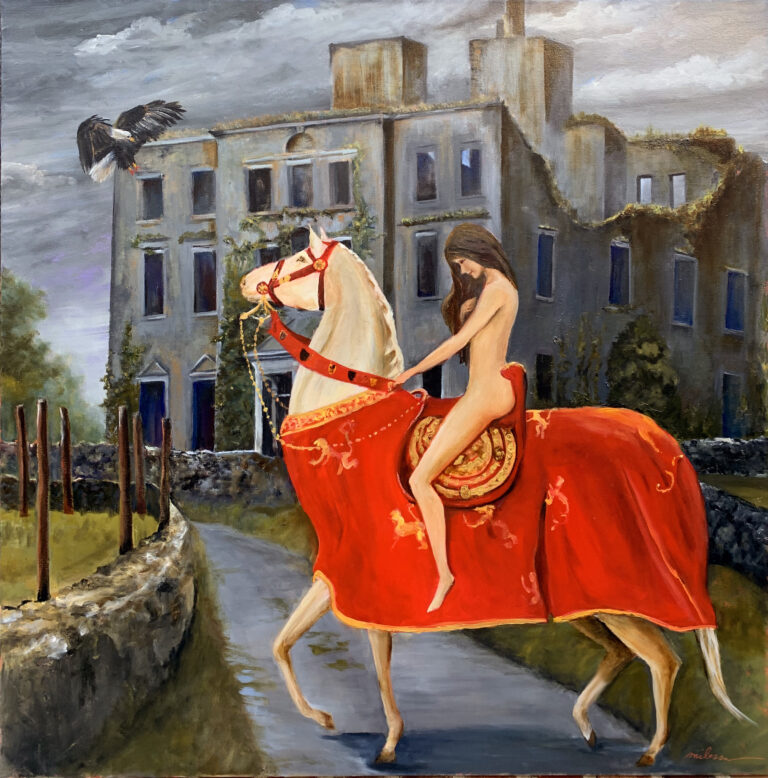
Why is Capturing the Imagination Important to me?
When I envision a landscape or one of my dreamscapes, part of that vision is meant for capturing the imagination. I may want to depict a moment in time and bring truth to that moment, but a painting’s audience needs to be able to recreate the image in their own minds in order for it to become real. This is capturing the imagination.
It’s about the Details
Moss growing on the shadowed area of a brick edifice can bring to mind earthy scents and the feel of cool clay as one remembers little fingers of childhood picking at the brick while playing hide-and-seek.
Hair or grass blowing in the wind can make fields and seascapes smell like summer or the salty brine of the ocean. Butterflies and flower petals bring warmth and whimsical comfort. The details of a painting should awaken the senses, and allow a person to enter the landscape freely.
…but then, it’s NOT about the Details
Juxtapose a detail-filled painting with one that lacks detail, and surprisingly, you’ll also capture the imagination. For example, the empty eyes of the characters in the paintings of Amadeo Modigliani brought interest and intrigue.

Edward Hopper famously painted Sun in an Empty Room, which is exactly as it sounds. The empty room captures the imagination and directs the audience’s attention to the feelings of the sunlight. If adding detail is not the way to capture the imagination, then removing details will certainly do the trick.
Finding Commonality
Capturing the imagination can be done via many artistic methods, and the commonality in those methods are that they provoke the mind to dare to enter a different space than the one where it exists. Details distract the mind as much as missing details, which is why either can result in the same effect. The important thing for the artist is to determine which artistic method will capture the imagination best and in the intended manner. It could be argued that Modigliani wanted the eyes of his subjects to be imagined rather than providing the detail for the mind to take for granted. It could be argued that the added details in other paintings are meant to evoke senses that could not be imagined if the mind was busy filling in other details. The mind will create amazing detail that is often better than what can be created on canvas, so capturing the imagination makes a piece truly worth a person’s appreciation.
Have a good week!
dei gratia, Milessa

“The best paintings create a story. My stories have happy endings.”
Milessa was born a big city girl in a dry, desolate area of Texas where the only trees she saw were mesquite and the only things to climb was her horse. She remembers a lot of brown but that did not stop her from dreaming in beautiful, bold color. She paints in a playful and visual style.